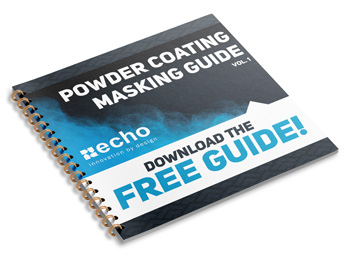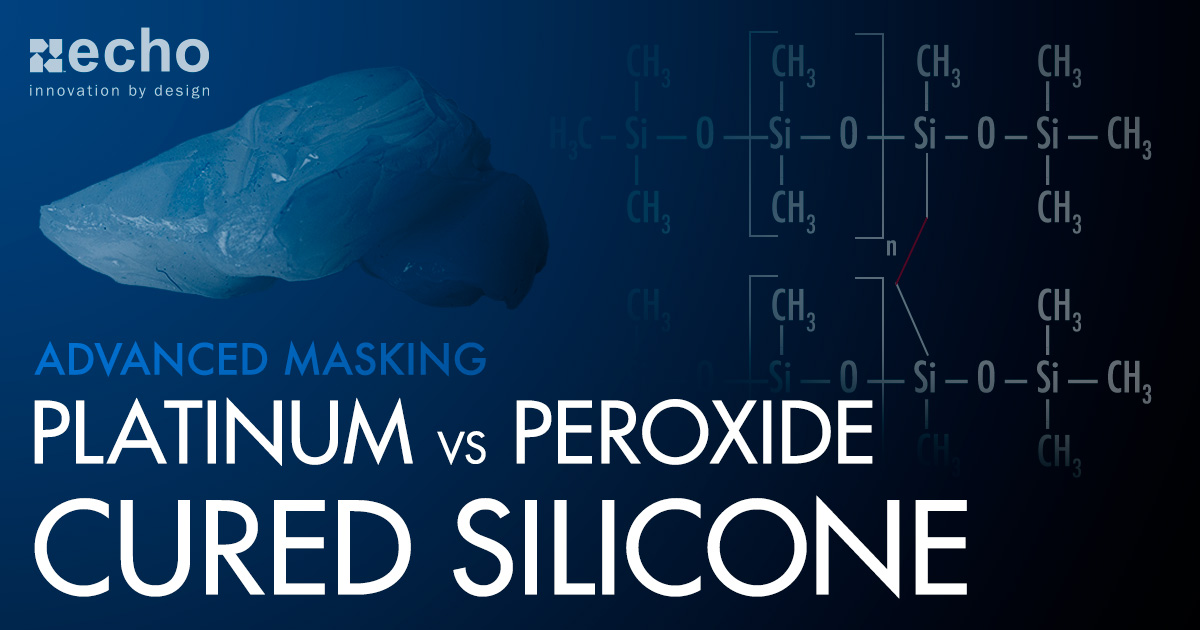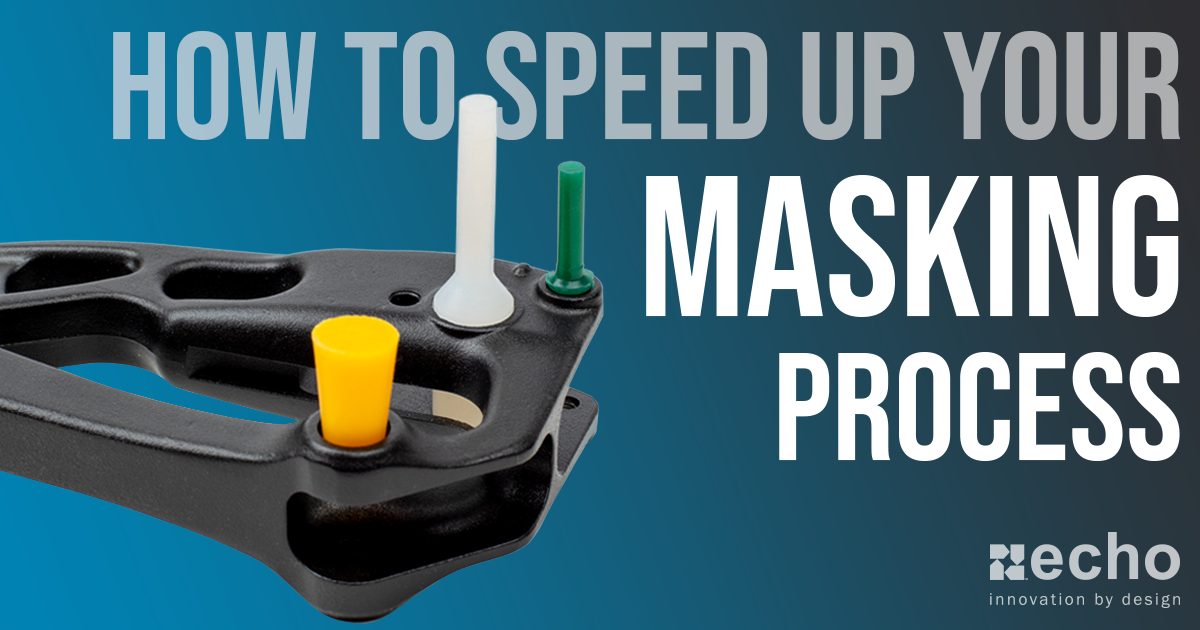How To Mask Threaded Holes Before Powder Coating
-

- Mar 22, 2021

In this post, we're going to take you through the basics of masking threaded holes for your powder coating process. We've broken it down to the basics to make this process as easy as possible for your manufacturing line's masking operations (or for your at-home powder coating project).
Why is it so Important to Mask Threads?
Paint that is trapped can hide within the component you've painted and can easily result in quality issues. Keeping threads clean will ensure your threads are in good condition in order to avoid cross-threading. Cross-threading can occur because the contaminated portions of the threads will cut new threads in the opposite piece.
The other critical reason to mask threads is to prevent the need for re-tapping. The first issue here is that the hole can't be re-tapped using a CNC machine since the tool can't be lined up with existing threads. So, a hand tap will be needed to be used, introducing a timely process and human error. If the hand tap isn't lined up correctly over cutting the tread, cross-threading, and shavings falling into the hole can occur. Re-tapping holes is an extremely time-consuming process and will also require additional investments in taps.
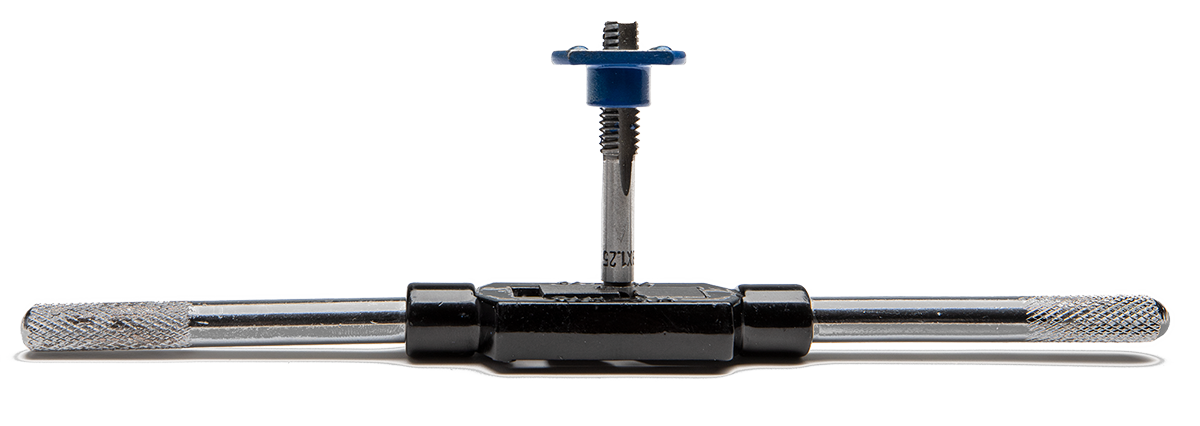

Blind Holes vs. Through Holes
We want to try to keep everything as simple as possible in this post, but also include a few technical notes here and there. When it comes to masking threaded holes, there are two types of threaded holes that you're going to run into: Blind Holes and Through Holes.
How to MaskBlind Holes
We want to try to keep everything as simple as possible in this post, but also include a few technical notes here and there. When it comes to masking threaded holes, there are two types of threaded holes that you're going to run into: Blind Holes and Through Holes.
A blind hole is a hole that is reamed, drilled, or milled to a specified depth without breaking through to the other side of the piece, meaning it has only one access point. These are typically going to be masked using a push plug (the most popular option being silicone tapered plugs)
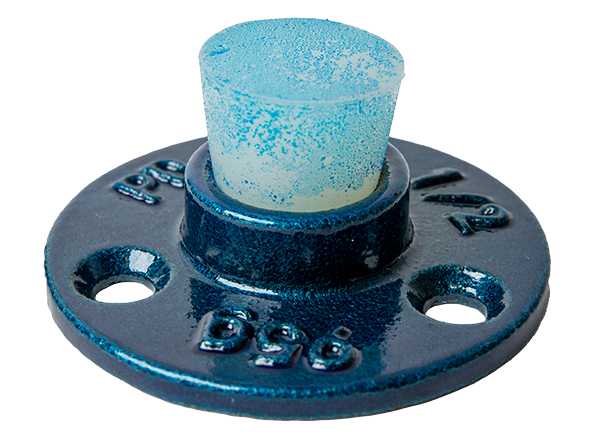

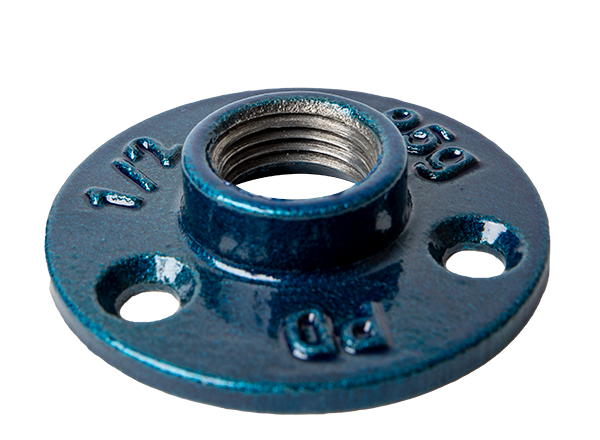

Sizing a Tapered Plug
To Keep It Simple: You want to match the middle of the tapered plug (shown in red in the graphic) to the ID (inside diameter) of your threaded hole.
Example: The ID of the leading threads of a 1/4-20 hole is 0.196". So, you need a tapered plug where the center of the plug is approximately the same diameter.
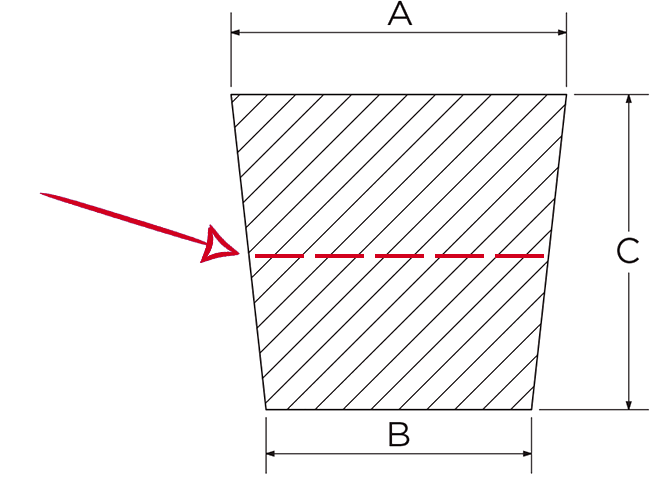

Tapered plugs are the top choice of most powder coaters for masking threaded blind holes as they're easy to install and their contoured shape can allow them to fit multiple hole sizes.
There are 3 dimensions: Top Diameter (A), Bottom Diameter (B), and Plug Height (C). In order to find the middle diameter, you just need to add the Top Diameter + Bottom Diameter and divide by 2.
Middle Diameter of Tapered Plug = (A+B) / 2
How To Mask Through Holes
A through-hole is a hole that goes through the entire piece, meaning it has 2 access points. (Typically with leading and exit threads). These are typically going to be masked using a pull plug (the most popular option being the silicone pull plugs).
With so many thread types and sizes, choosing the correct plug can be a little tricky when you don't have them with you. So, let's examine how to properly size both tapered plugs and pull plugs.
Sizing a Pull Plug
To Keep It Simple: You need a pull plug that is slightly bigger than the inside diameter of the threads you're masking. To be more specific, we typically recommend choosing a pull plug that is .030" bigger than the ID of the threaded hole you're masking.
Example: The ID of the leading threads of a 1/4-20 hole is 0.196". So, you need a pull plug that is right around 0.226" for a good fit/seal.
Silicone pull plugs are the top choice of most powder coaters for masking threaded through-holes as they're easy to install and, when sized correctly, provide a highly effective seal.
The main dimensions to pay attention to are the plug's outside diameter and the height of the plug (especially if your through-hole is long). Handle height can also be important for installation purposes.


Masking Leading/Exit Threads
In some cases, you will be required to keep the leading (and sometimes exit) thread clear of any paint. While standard tapered and pull plugs are the most commonly used masking plugs, they're not the best option for these scenarios.
If you're needing to masking off the leading and/or exit threads, you'll need a masking plug specifically designed for that. Luckily, there are several options.
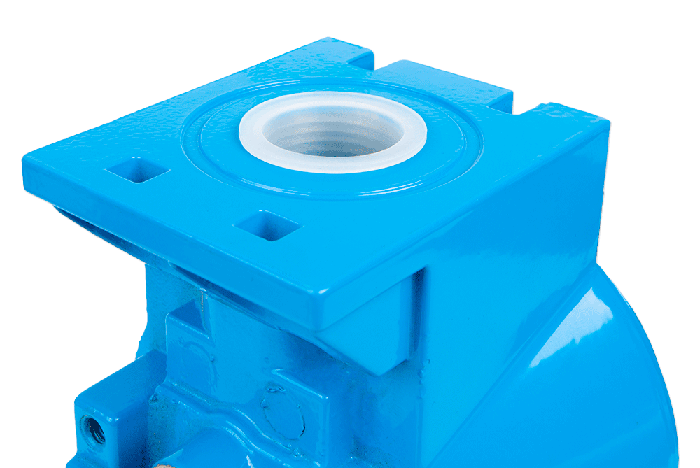

Material Selection
Powder coating involves a high-temperature curing process that typically ranges between 350°F - 600°F. These are extreme temperatures and will require a custom formulated silicone to withstand the heat.
Silicone rubber is a unique elastomer that is generally stable and resistant to extreme temperatures while maintaining its useful properties.
Concerned About Silicone Volatiles (sometimes referred to as silicone residue)?
A concern that is typically brought up is the risk of silicone volatiles, which is caused when the material is not fully cured. Fortunately, silicone masking providers, like Echo Engineering, typically put these solutions through either an extended curing process or a secondary curing process to reduce the risk of silicone residue from happening.
Alternatives to Silicone
In the case that you absolutely refuse to use silicone, there are some alternatives, but they typically have some drawbacks, such as price, tooling costs, and installation/removal difficulties. The alternatives include:
- Metal Bolt: While this option makes a good way of producing a grounding point, it's one of the more expensive options (unless you're doing very low volume) and takes more time to install/remove
- Tapes: We'll cover this later, but masking tapes like green poly can withstand temperatures up to 400°F, and glass cloth can reach up to 500°F. Unfortunately, this is not a great option for threaded holes.
- Highly Glass-Filled PPS: This option will require a high-tooling cost (compared to rubber molding tool) and has to be designed exactly for your application (unlike how tapered silicone plugs can conform to the threads)
- Other Plastics (PEEK and PTFE): These options are difficult to mold and will not hit the same max temperatures that you'll find with silicone, but they are an option for some rare cases
- EPDM: This option is only viable for low-temperature powder coating that doesn't exceed 350°F. But because it is a rubber, it will conform well, providing an effective seal.
Request a free masking plug sample kit!
We've also seen powder coaters use a variety of other low-temperature materials to mask threaded holes but remove them before sending the component through the curing process. This is extremely time-consuming and difficult to accomplish without keeping powder out of the hole or tarnishing the rest of the finish when removing the material.
Can You Use Tape?
Unless you have no other options with you, we don't recommend using tape for masking threaded holes.
The only time you may want to use tape would be if you're masking the entire surface above the threaded hole or if you need to mask off the ground area around the threaded hole. In that case, you'll want to go with a masking die-cut disc (either Green Poly or Glass Cloth). The issue with die-cuts in these scenarios is that you may have issues with correctly centering them.
Avoid: Rolls of Tape
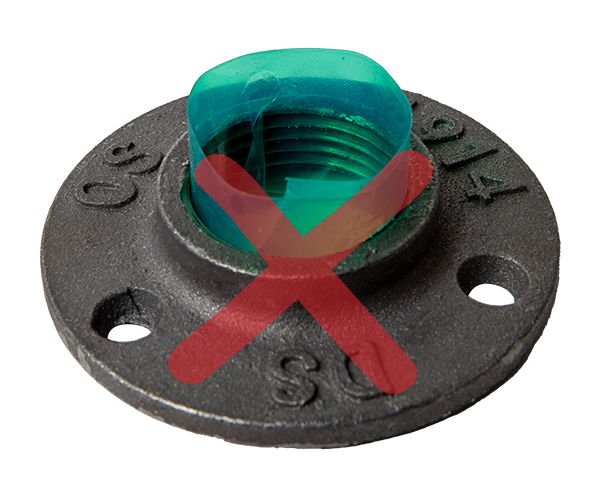

Situational: Die-Cuts
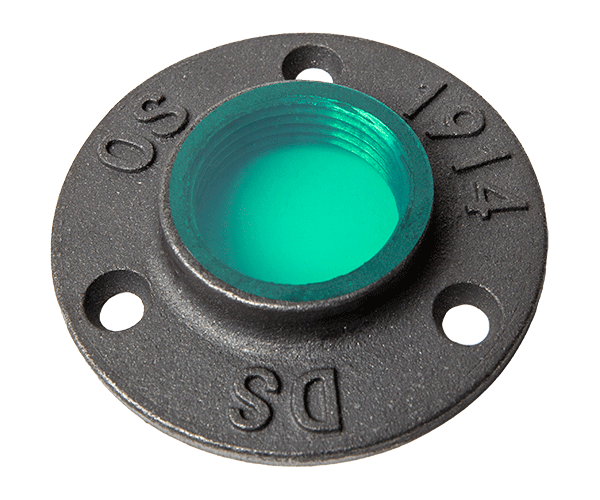

Common Thread Sizes
For tapered plugs, match the minor diameter of the internal threads as closely as possible to the middle of the tapered plug. For pull plugs, find a pull plug that is approx. .030" bigger than the minor diameter of the internal threads
SAE
Thread Designation |
Minor Diameter of Internal Threads (in) |
| 0-80 | 0.047 |
| 1-64 | 0.056 |
| 2-56 | 0.067 |
| 2-64 | 0.069 |
| 4-40 | 0.085 |
| 4-48 | 0.089 |
| 5-40 | 0.098 |
| 5-44 | 0.100 |
| 6-32 | 0.104 |
| 6-40 | 0.111 |
| 8-32 | 0.130 |
| 8-36 | 0.134 |
| 10-24 | 0.145 |
| 10-32 | 0.156 |
| 1/4-20 | 0.196 |
| 1/4-28 | 0.211 |
| 5/16-18 | 0.252 |
| 5/16-24 | 0.267 |
| 3/8-16 | 0.307 |
| 3/8-24 | 0.330 |
| 7/16-14 | 0.360 |
| 7/16-20 | 0.383 |
| 1/2-13 | 0.417 |
| 1/2-20 | 0.446 |
| 9/16-12 | 0.472 |
| 9/16-18 | 0.502 |
| 5/8-11 | 0.527 |
| 5/8-18 | 0.565 |
| 3/4-10 | 0.642 |
| 3/4-16 | 0.682 |
| 7/8-9 | 0.755 |
| 7/8-14 | 0.798 |
| 1-8 | 0.865 |
| 1-14 | 0.910 |
Metric
Thread Designation |
Minor Diameter of Internal Threads (mm) |
| M4 - (M4x0.7) | 3.242 |
| M5 - (M5x0.8) | 4.134 |
| M6 - (M6x1) | 4.917 |
| M8 - (M8x1.25) | 6.647 |
| M8x1 | 6.917 |
| M10 - (M10x1.5) | 8.376 |
| M10x1.25 | 8.647 |
| M12 - (M12x1.75) | 10.106 |
| M12x1.25 | 10.647 |
| M14 - (M14x2) | 11.835 |
| M14x1.5 | 12.376 |
| M16 - (M16x2) | 13.835 |
| M16x1.5 | 14.376 |
| M18 - (M18x2.5) | 15.294 |
| M18x1.5 | 16.376 |
| M20 - (M20x2.5) | 17.294 |
| M20x1.5 | 18.376 |
| M22 - (M22x2.5) | 19.294 |
| M22x1.5 | 20.376 |
| M24 - (M24x3) | 20.752 |
| M24x2 | 21.835 |
| M27 - (M27x3) | 23.752 |
| M27x2 | 24.835 |
| M30 - (M30x3.5) | 26.211 |
| M30x2 | 27.835 |
| M33 - (M33x3.5) | 29.211 |
| M33x2 | 30.835 |
Conclusion
At the end of the day, masking threaded holes can be super simple. If you're masking a blind hole, you'll want to most likely go with a push plug, like silicone tapered plugs. If you're masking a through hole, you'll most likely want to use a pull plug.
It's not about just clean masking lines. It's about ensuring you don't damage threads and save time on your secondary ops.
About Echo Engineering
Echo Engineering has been providing masking solutions to powder coaters for well over 50 years. We specialize in not only standard catalog options, like powder coating tapes, caps, and plugs, but also in designing, engineering, and manufacturing custom solutions for some of the largest metal finishing lines in the world.



